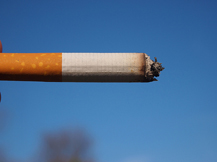Tobacco Goes from Dark Side Villain to Biofuel Hero
 Tobacco is about to take center stage as a renewable biofuel crop if new research from the Lawrence Berkeley National Laboratory pans out. That would be quite a turnaround for tobacco, which according to the Centers for Disease Control is responsible for one in every five deaths in the U.S. each year. But hey, if even Darth Vader is capable of redemption, maybe there is hope for tobacco after all.
Tobacco is about to take center stage as a renewable biofuel crop if new research from the Lawrence Berkeley National Laboratory pans out. That would be quite a turnaround for tobacco, which according to the Centers for Disease Control is responsible for one in every five deaths in the U.S. each year. But hey, if even Darth Vader is capable of redemption, maybe there is hope for tobacco after all.The Berkeley biofuel breakthrough
Microbial fermentation is a promising new area of research in the field of biofuels, but the Berkeley team is aiming even higher. Biochemist Christer Jansson explains that the Berkeley team’s goal is to skip a few steps by converting the hydrocarbon molecules from tobacco directly into a fuel that is practically ready to use as a drop-in substitute for petroleum fuels:
“We want to bypass downstream processes like fermentation and produce fuels directly in the crop,” says Jansson. “After the biomass is crushed, we could extract the hydrocarbon molecules, and crack them into shorter molecules, creating gasoline, diesel, or jet fuel.”
Super-tobacco for biofuel
In order for the process to be cost-effective, the team needs to come up with a strain of tobacco that is highly efficient at harvesting sunlight and converting carbon dioxide to hydrocarbon molecules. They are looking to enhance tobacco with genes from cyanobacteria, a microbe that already has a solid reputation as an energy harvester in the alternative fuels field.
More biofuel research on the tobacco bandwagon
Tobacco has attracted a fair amount of attention of its own among biofuel researchers. The University of Maryland is looking into a tobacco-hosted virus for fuel cells and batteries, for example. Another angle of investigation comes from the University of Central Florida where researcher Henry Daniell is working on a tobacco enzyme to help convert woody biomass to ethanol. The goal is to develop a process that would work on a wide variety of feedstocks, enabling refineries to take advantage of local resources such as orange crop waste in Florida.
A place in the sun for tobacco biofuel
As a non-food biofuel crop, tobacco fits in nicely with President Obama’s national biofuel initiative announced last summer, which involves partnering the U.S. Department of Agriculture, the Navy, and the Department of Energy in a push to get more non-food biofuel crops into production.
Tobacco also has a potential advantage over other non-food biofuel crops like miscanthus, switchgrass and camelina. Since a fairly large amount of land is already dedicated to tobacco farming, there would be no need to put new land into production to grow tobacco for biofuel. Though the aforementioned crops are hardy and can be grown on lands not fit for food crops, the farming of new (albeit marginal) land involves issues that need to be addressed including habitat loss, soil loss, and transportation infrastructure.
As far as agricultural land use goes there would be no loss of existing acreage for food production, if mass quantities of tobacco were diverted from the drying shed to the biofuel refinery. Of course, the price of cigarettes would probably skyrocket as a result of diminished domestic supply, but at least that would give the folks at the Centers for Disease Control something to smile about.
You can return to the main Market News page, or press the Back button on your browser.

